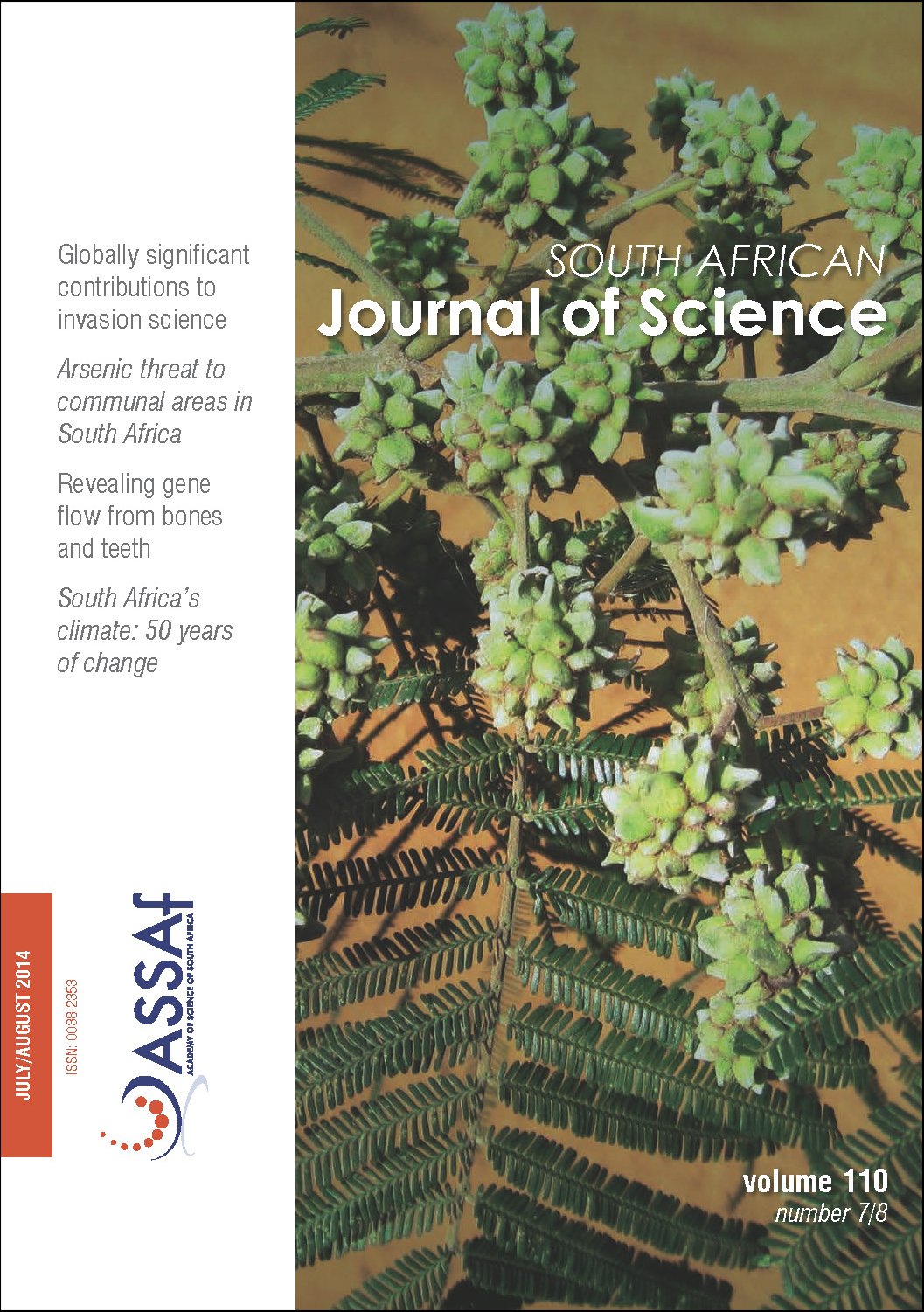Arsenic residues in soil at cattle dip tanks in the Vhembe district, Limpopo Province, South Africa
DOI:
https://doi.org/10.1590/sajs.2014/20130393Keywords:
East Coast Fever, arsenic, cattle dip tanks, soil, Vhembe districtAbstract
Arsenic-based compounds have been used for cattle dipping for about half a century to combat East Coast Fever in cattle in South Africa. The government introduced a compulsory dipping programme in communal areas to eradicate the disease in 1911. Concern has been raised regarding the ecological legacy of the use of arsenic-based compounds in these areas. We investigated the incidence of arsenic residue in soil at 10 dip sites in the Vhembe district of Limpopo Province, South Africa. We found high levels of arsenic contamination at a depth of 300 mm at some sites. Control samples indicated that these high arsenic levels are the result of the application of inorganic arsenic. Variation of arsenic concentrations is attributed to duration of exposure to the chemical, soil properties and distance from the dip tank. Concerns are raised regarding the structural condition of the dip tanks, encroaching villages and possible health threats to the human population in the area.
Published
Issue
Section
License

This work is licensed under a Creative Commons Attribution 4.0 International License.

All articles are published under a Creative Commons Attribution 4.0 International Licence
Copyright is retained by the authors. Readers are welcome to reproduce, share and adapt the content without permission provided the source is attributed.
Disclaimer: The publisher and editors accept no responsibility for statements made by the authors
How to Cite
- Abstract 412
- PDF 498
- EPUB 180
- XML 382












.png)